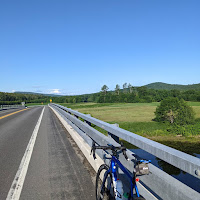
21 Jun All About the Tour de France
The Tour de France begins at the end of this week. As an avid cyclist I enjoy watching it and I find that it provides some neat opportunities for science, health, and physical education lessons. Here are some of my go-to resources for teaching and learning about the Tour de France.
The Science of Bicycles and Bicycling
There is a lot of physics involved in casual bike riding and in racing. Here’s a selection of videos that explain the physics of bicycling.
The first time that you ride in a pack of experienced cyclists you’ll feel the power of drafting. Besides their incredible fitness and bike handling skills, drafting helps cyclists in the Tour de France move quickly. The following video explains how drafting works.
Minute Physics offers two videos about the physics of bicycles. In How Do Bikes Stay Up? we learn how bikes stay upright, how design and weight influences balance, and why bicycles are difficult to balance in reverse. The Counterintuitive Physics of Turning a Bike explains how we turn bicycles.
The Diet of a Tour de France Racer
I’ve done some long days on my bike over the years including a double-century ride and at the end I’ve always felt like I could eat anything in sight. That’s because I burned thousands of calories. But even then I didn’t burn the 6,000-8,000+ calories that a typical Tour de France racer burns every day of the race.
What does it look like and feel like to eat like a professional cyclist? That’s what the Wall Street Journal’s Joshua Robinson set out to discover in his 6,000 calorie challenge. Take a look at the video below to see how he did it. Pay attention to the professional cyclist at the 2:40 mark in the video for commentary about energy gels because it surprise you and make you rethink the whether or not the average weekend warrior needs the expensive “sports energy” products for a simple hour workout.
If you want to get into a bit more of the science of nutrition of cyclists, take a look at this video featuring the team nutritionist for EF Education First’s professional cycling team.
The Tour de France begins at the end of this week. As an avid cyclist I enjoy watching it and I find that it provides some neat opportunities for science, health, and physical education lessons. Here are some of my go-to resources for teaching and learning about the Tour de France.The Science of Bicycles and BicyclingThere is a lot of physics involved in casual bike riding and in racing. Here’s a selection of videos that explain the physics of bicycling. The first time that you ride in a pack of experienced cyclists you’ll feel the power of drafting. Besides their incredible fitness and bike handling skills, drafting helps cyclists in the Tour de France move quickly. The following video explains how drafting works. Minute Physics offers two videos about the physics of bicycles. In How Do Bikes Stay Up? we learn how bikes stay upright, how design and weight influences balance, and why bicycles are difficult to balance in reverse. The Counterintuitive Physics of Turning a Bike explains how we turn bicycles. The Diet of a Tour de France RacerI’ve done some long days on my bike over the years including a double-century ride and at the end I’ve always felt like I could eat anything in sight. That’s because I burned thousands of calories. But even then I didn’t burn the 6,000-8,000+ calories that a typical Tour de France racer burns every day of the race.What does it look like and feel like to eat like a professional cyclist? That’s what the Wall Street Journal’s Joshua Robinson set out to discover in his 6,000 calorie challenge. Take a look at the video below to see how he did it. Pay attention to the professional cyclist at the 2:40 mark in the video for commentary about energy gels because it surprise you and make you rethink the whether or not the average weekend warrior needs the expensive “sports energy” products for a simple hour workout. If you want to get into a bit more of the science of nutrition of cyclists, take a look at this video featuring the team nutritionist for EF Education First’s professional cycling team. How Much Do Professional Cyclists Make?In his book Draft Animals, Phil Gaimon, a retired professional cyclist, detailed his struggles to makes end meet while racing. The take-away from reading that book is that unlike professional Major League Baseball or National Basketball Association teams in which even the last person on the bench is paid ten times what a teacher makes in a year, professional cycling teams have one or two highly-paid ($1 million+) athletes and most of the rest make salaries in the range of teachers and school district administrators. In this 2019 article Cycling Tips detailed how much riders can earn in the Tour de France and throughout the professional cycling season.  bicycling, Free Technology For Teachers, Geography, Physics, Science, Tour de FranceRead More
bicycling, Free Technology For Teachers, Geography, Physics, Science, Tour de FranceRead More


Sorry, the comment form is closed at this time.